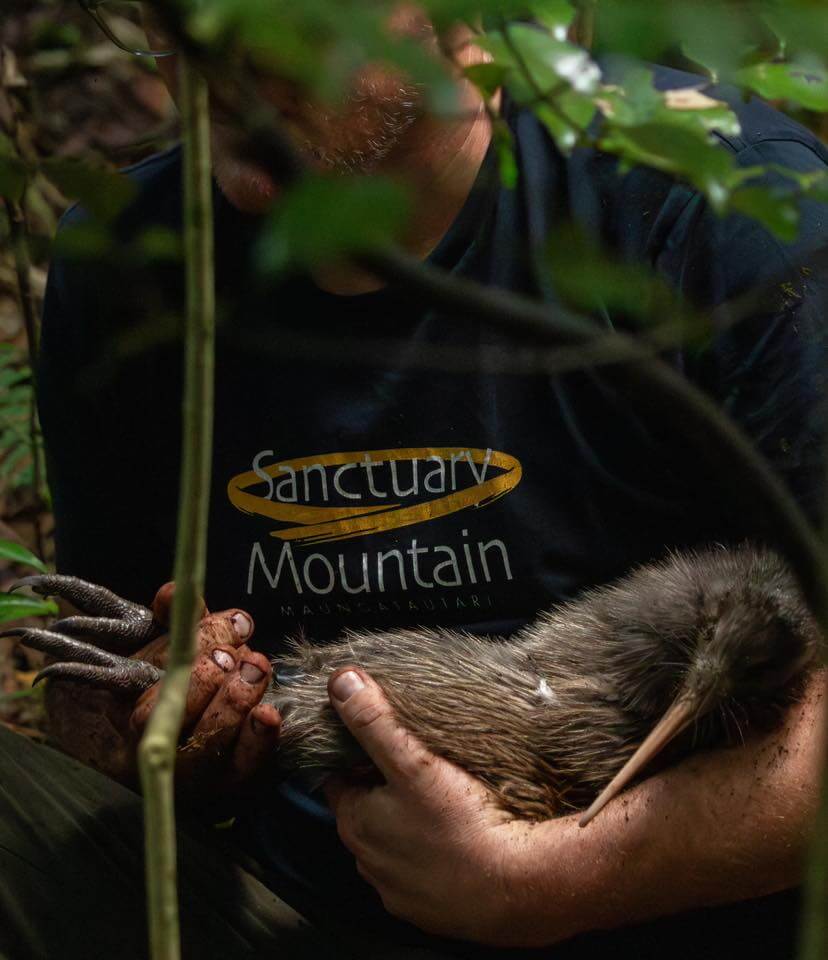
Sanctuary Mountain kiwi
Last week, councillor Mich’eal Downard, chair Pamela Storey and I were guests at Maungatautari, watching the annual kiwi translocation. Up until now I’ve been a bit dubious about the Maungatautari pest-free project.
However, over time my view has changed somewhat, and given the project has now been in existence since 2002, I think it’s worth persisting with. Making it self-funding is the on-going challenge.
The project consists of 3400 hectares of forest encompassed by a 47 kilometre long pest-proof fence. It’s reportedly the largest predator-free enclosure in the world. There are an estimated 3000 kiwi now living on the mountain, and there’s little doubt kiwi are one of the species benefiting from the anti-mammalian fortification.
Chief executive, Helen Hughes has been at the helm for 18 months. Her vision for the Maunga is decisive, and her ideas for financial sustainability, are creative and novel.
Helen discussed the kiwi programme, which involves kiwi being raised within the enclosure for translocating out to other projects around the country. In 2023 61 adult kiwi were shipped to the Tongariro Kiwi Sanctuary experiment, and in 2024, another 88 – with dozens more this year. I was also informed that Sanctuary Mountain doesn’t currently monitor the outcomes of the birds they give away.
I’ve been following the kiwi survival statistics for the Tongariro Kiwi Sanctuary for 20 years, and the project is a kiwi disaster. A mad-scientist experiment. Hundreds of radio-tracked kiwi have died in the Sanctuary since 2000, and they continue to do so. Many are from Maungatautari. Ongoing aerial 1080 operations have been disrupting the Tongariro forest since 1999. Hundreds of kiwi have been translocated into Tongariro, but very few come out. Most die prematurely, often as chicks. Hundreds of them. This has been confirmed by Official Information Act requests.
Conversely, and aside from Sanctuary Mountain, the Department of Conservation (DOC) said in another Official Information Act request (OIA) that it has removed 99 kiwi eggs, and seven kiwi chicks from the Okahu Valley between 2000 and 2017. DOC states that the Okahu Valley, which borders Te Urewera National Park, has never been aerially poisoned with 1080, and has not had stoat or ferret control undertaken. The forest was logged in the 1960s and is open to pig and deer hunting all year round. Kiwi have survived the logging, they’ve survived the pig hunting, and they’ve survived the absence of pest control in the Okahu Valley. In fact, they’ve thrived. That’s why DOC can raid their nests in order to boost populations in its poisoned forests.
The High Court recently ruled that the Department of Conservation permitting the New Zealand Transport Agency to kill protected wildlife during the Mt Messenger Bypass project, was unlawful. I think it’s now crucial for the Maungatautari Trust and local iwi to ensure that the outcomes of their translocated kiwi, are monitored. The success of the Maungatautari project depends on those kiwi being legally protected from the mad-scientist experiments.
- My view, not necessarily that of council.













